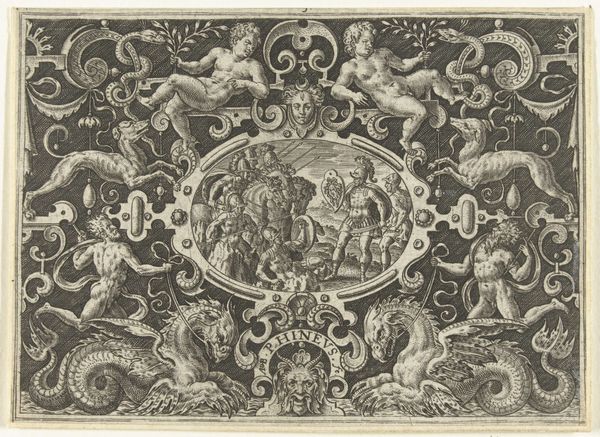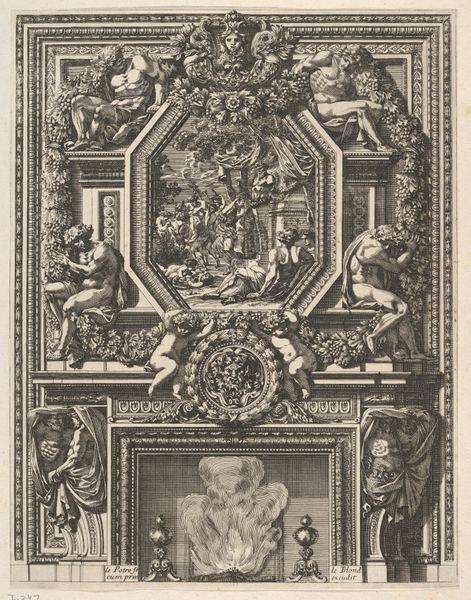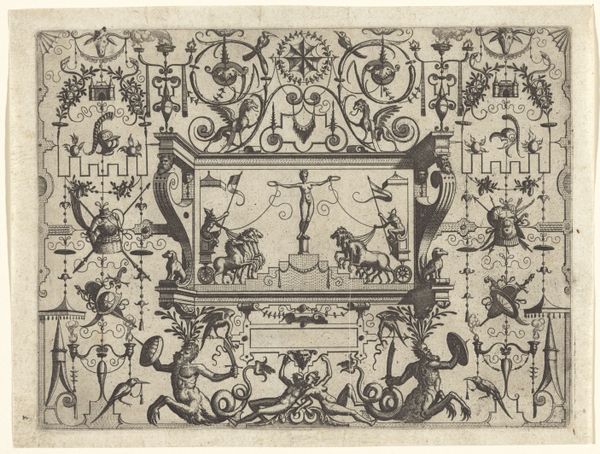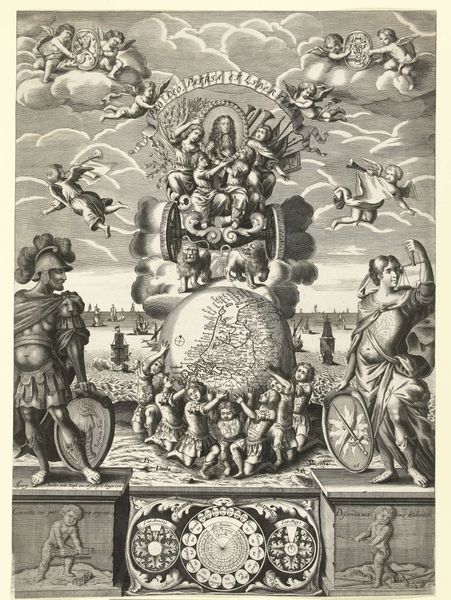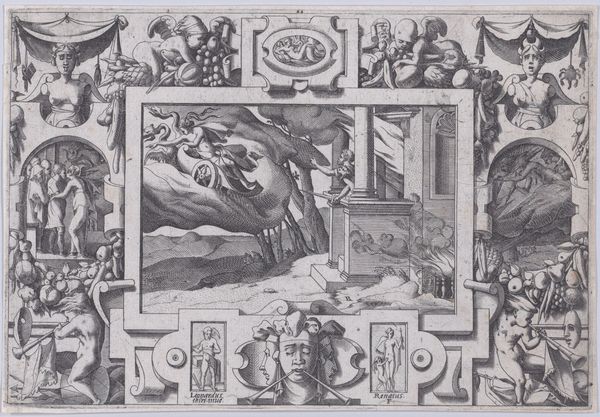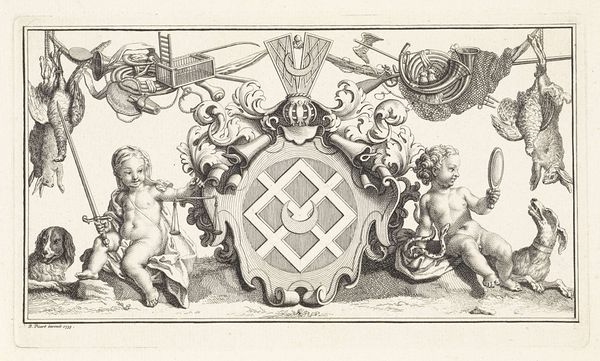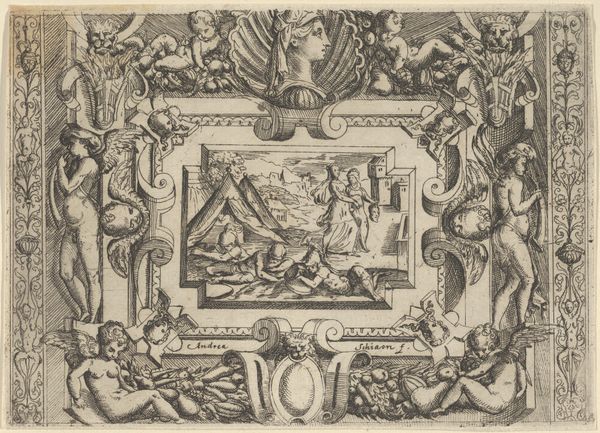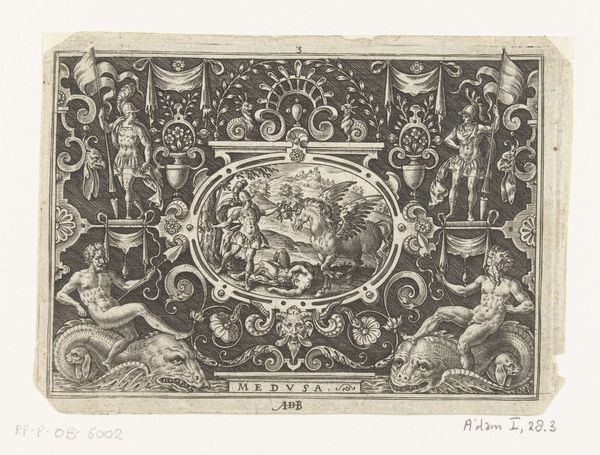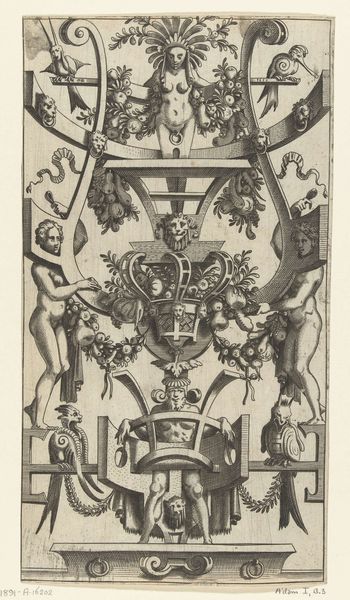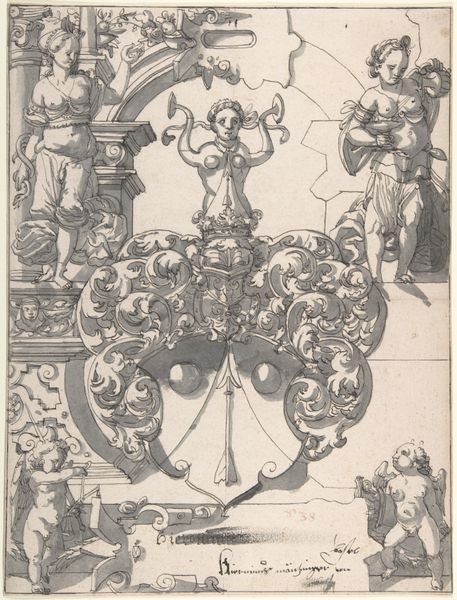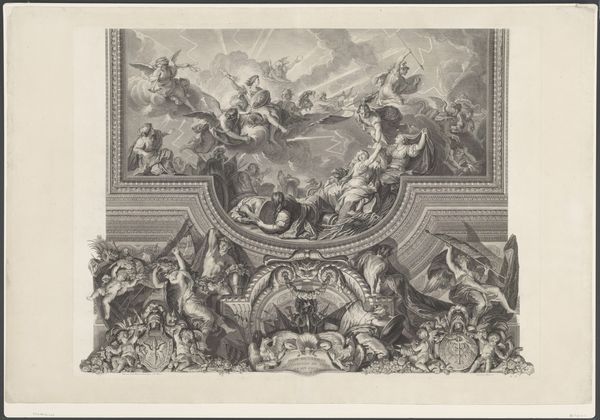
print, intaglio, engraving
#
allegory
#
narrative-art
# print
#
intaglio
#
mannerism
#
figuration
#
11_renaissance
#
linocut print
#
history-painting
#
academic-art
#
engraving
#
intricate and detailed
Dimensions: height 130 mm, width 200 mm
Copyright: Rijks Museum: Open Domain
This print of the Rape of Proserpina was made by Pieter van der Heyden in the 16th century. The medium of choice here, engraving, is a meticulous subtractive process. The artist would have used a tool called a burin to carve lines directly into a copper plate. Consider the immense patience and skill required to produce this kind of intricate design, with its complex balance of shadow and light, all achieved through physical labor. The image itself, showing Pluto’s abduction of Proserpina, is framed by ornament in the grotesque style, popular at the time. Look closely, and you’ll notice the many repeated motifs; masks, swags, and figures, all rendered with incredible precision. This was not merely an aesthetic exercise. Prints like these were often produced in multiples, and disseminated widely. They could spread ideas, and, of course, generate income for the artist and publisher. So, while we might admire the refined elegance of this image, let's also remember the social and economic context in which it was made, where artistry and commerce were intertwined.
Comments
No comments
Be the first to comment and join the conversation on the ultimate creative platform.
